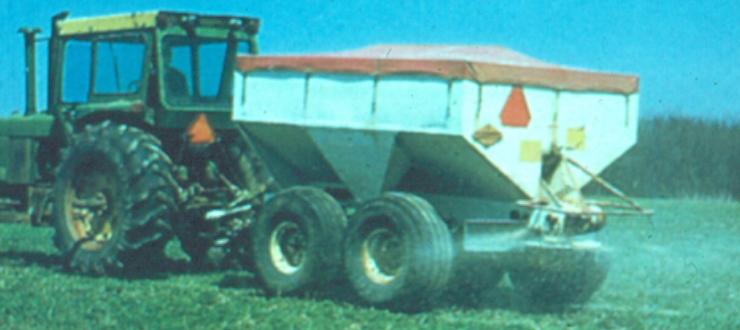
In recent years, fertilizer prices have increased. Budgets prepared by university agricultural economists indicate that fertilizer cost associated with growing grass is typically 50 to 60 percent of the cost of producing beef cattle. Unfortunately, it appears that the cost of commercial fertilizer is not likely to decline much anytime soon.
Producers who feel they have limited funds to spend on their cattle operation often ask for guidance as to what type of fertilizer or soil amendment should receive top priority. The right prioritization of soil amendments for pastures and hay fields may vary on different farms and in different situations, but soil pH deserves close scrutiny. Over time, most soils in the Southeast tend to become unacceptably acid, which limits growth of most forage species. In general, university recommendations are to keep soil pH at 5.8 or above for most warm season forage crops and at 6.0 or higher for most cool season forage crops.
Many forage crops can be grown at a somewhat lower pH than the levels just specified. However, the farther below these levels, the less likely it becomes that optimum growth will occur. Also, the soil pH range is a logarithmic scale and therefore the impact of allowing pH levels to decline are more dramatic than they might seem. For example, a soil pH of 5.0 is ten times more acidic than a pH of 6.0. Most forage crops grow poorly at pH 5.5 or less. The farther it declines below this point the more pronounced the adverse effects.
In many cases, applying lime to raise soil pH should be a top priority. This is especially true if the soil pH is 5.5 or less. Having an appropriate soil pH is important because it makes many nutrients in the soil more available for uptake by forage crops, it favors the growth of forage plants, it decreases the competitive ability of many weeds, and it increases the effectiveness of many herbicides. Lime raises soil pH, thus reducing or eliminating the problems just stated. It also adds Calcium and (with dolomitic lime) Magnesium to the soil.
Soil testing is more valuable than ever. You can’t determine soil pH, which is a critically important factor, any other way. Also, anyone who doesn’t soil test is guessing when it comes to applying fertilizer. If too much is applied, money has been wasted; if too little is applied, forage growth will be less than optimum. Soil testing isn’t a glamorous activity, but this simple task can provide a huge payback in terms of forage crop productivity and animal production. In these days of high-priced fertilizer, it is more important than ever.
If a producer feels he or she can’t afford to apply all the nutrients recommended by soil tests, it makes sense to prioritize where fertilizer will be applied, because not all fields are the same. For example, a bottomland pasture where there is productive soil and typically good soil moisture levels will produce more forage than an upland area where there has been erosion in the past and where rain runoff is high.
Foraging Ahead is a column presented by Ragan & Massey and written by Dr. Don Ball, Professor Emeritus at Auburn University. Dr. Ball is one of the authors of the popular book “Southern Forages,” which can be found via a computer search that uses the words, “Southern Forages- The Fertilizer Institute.”
